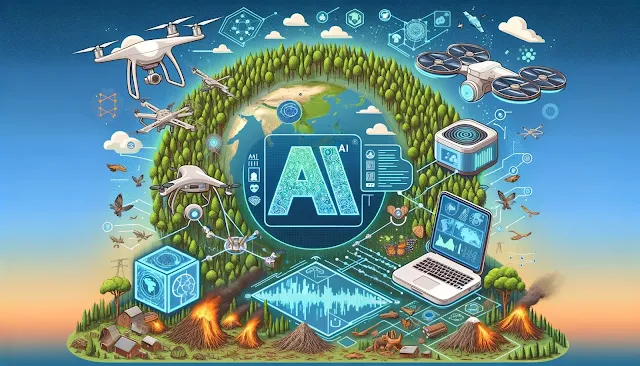SEO Keywords: AI social good, AI for good, AI humanitarian, AI social impact, AI positive impact, AI in social services, AI for society, AI in non-profits, AI for public health, AI for education, AI social applications, AI social benefits, AI community impact, AI social challenges, AI social projects, AI ethical impact, AI social innovation, AI social solutions, AI positive change, AI in social work.
Artificial Intelligence (AI) has the potential to drive significant positive change in society. This blog post explores various case studies and examples of AI being used for social good, its benefits, challenges, and future trends.
Understanding AI for Social Good
AI for social good involves leveraging AI technologies to address social, humanitarian, and environmental challenges. Key areas where AI can make a positive impact include:
- Public Health: AI can improve healthcare delivery and outcomes through predictive analytics and personalized treatment plans.
- Education: AI can provide personalized learning experiences and bridge educational gaps.
- Environmental Conservation: AI can help monitor and protect natural resources and wildlife.
 |
| Illustration of AI applications in public health, education, and environmental conservation. |
Case Study: AI in Public Health
One notable example of AI in public health is its use in predicting disease outbreaks and improving patient care. For instance, AI models can analyze vast amounts of health data to identify patterns and predict the spread of infectious diseases. This enables healthcare providers to take proactive measures and allocate resources effectively.
 |
| Example of AI application in predicting disease outbreaks and improving patient care. |
Image Prompt: AI in public health.
Case Study: AI in Education
In education, AI-powered tools are being used to provide personalized learning experiences. For example, adaptive learning platforms use AI to tailor educational content to individual student needs, helping them learn at their own pace. This approach has been particularly beneficial in bridging educational gaps and providing support to underserved communities.
 |
| Example of AI application in providing personalized learning experiences in education. |
Image Prompt: AI in education.
Case Study: AI in Environmental Conservation
AI is also playing a crucial role in environmental conservation. For instance, AI-powered drones and satellite imagery are used to monitor deforestation and track wildlife populations. These technologies help conservationists gather critical data and implement effective strategies to protect natural habitats and endangered species.
 |
| Example of AI application in monitoring deforestation and tracking wildlife populations. |
Image Prompt: AI in environmental conservation.
Key Benefits of AI for Social Good
AI offers several benefits when applied to social good, including:
- Scalability: AI can analyze vast amounts of data quickly, providing scalable solutions to complex problems.
- Precision: AI can identify patterns and make predictions with high accuracy, enabling targeted interventions.
- Efficiency: AI automates tasks, freeing up resources and time for more strategic initiatives.
 |
| Infographic highlighting the benefits of AI for social good, including scalability, precision, and efficiency. |
Image Prompt: Benefits of AI for social good.
Challenges of AI for Social Good
Despite its potential, there are several challenges to implementing AI for social good, including:
- Data Privacy: Ensuring the privacy and security of sensitive data is crucial.
- Bias and Fairness: AI models can reflect biases present in the training data, leading to unfair outcomes.
- Accessibility: Ensuring that AI technologies are accessible and beneficial to all segments of society.
 |
| Infographic outlining the challenges of implementing AI for social good, including data privacy and bias. |
Image Prompt: Challenges of AI for social good.
Future Trends in AI for Social Good
The future of AI for social good involves several trends, including:
- Collaborative Efforts: Increased collaboration between governments, non-profits, and tech companies to leverage AI for social good.
- Ethical AI Development: Focus on developing AI technologies that are ethical, fair, and transparent.
- AI for Crisis Response: Utilizing AI to respond to natural disasters and humanitarian crises more effectively.
 |
| Illustration of future trends in AI for social good, including collaborative efforts and ethical AI development. |
Image Prompt: Future trends in AI for social good.
Conclusion
AI has the potential to drive significant positive change in society by addressing critical social, humanitarian, and environmental challenges. By overcoming current obstacles and leveraging future trends, we can harness the power of AI to create a better world for all.
 |
| Graphic summarizing the potential and future of AI for social good. |

Comments
Post a Comment